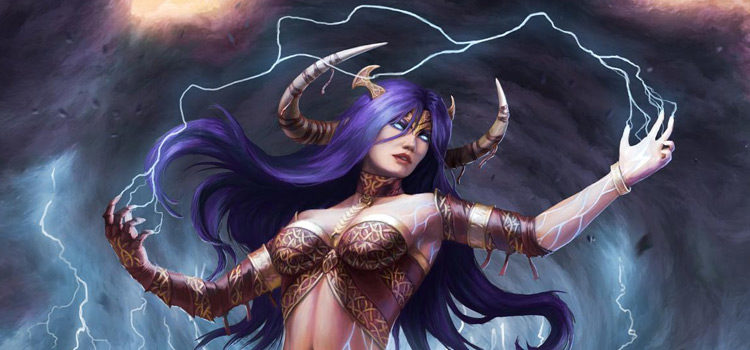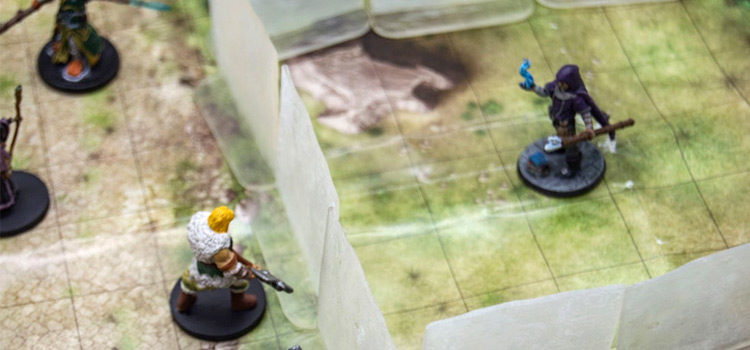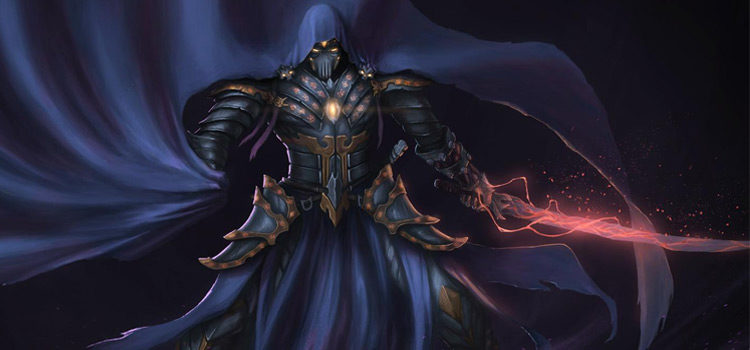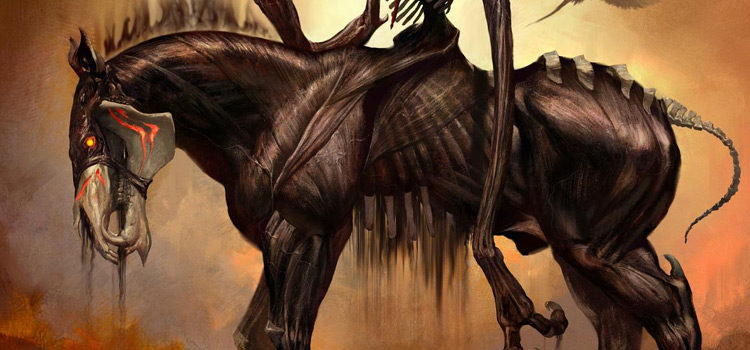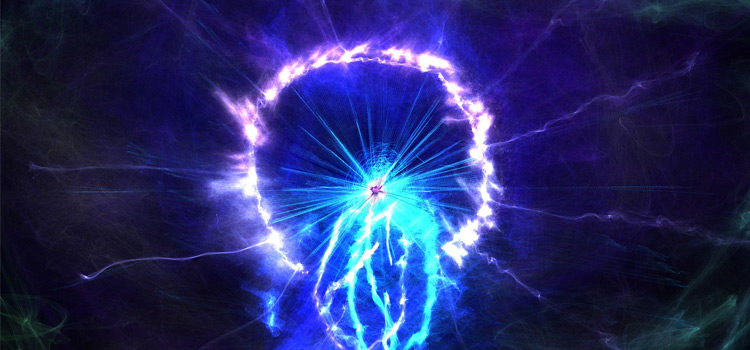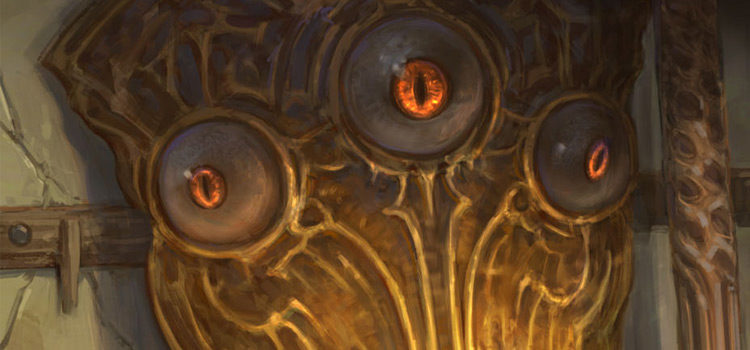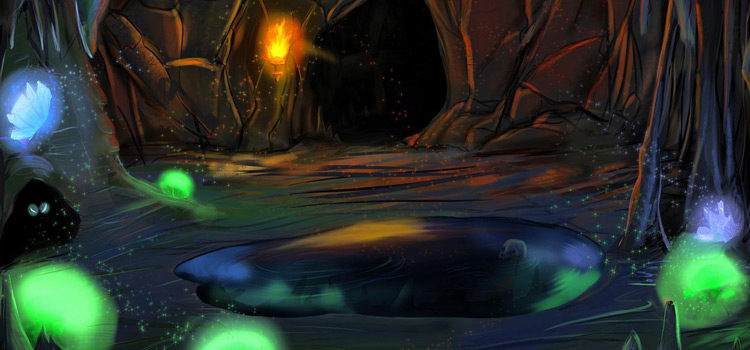Darkness: D&D 5e Spell Guide
This post may contain affiliate links. If you buy something we may get a small commission at no extra cost to you. (Learn more).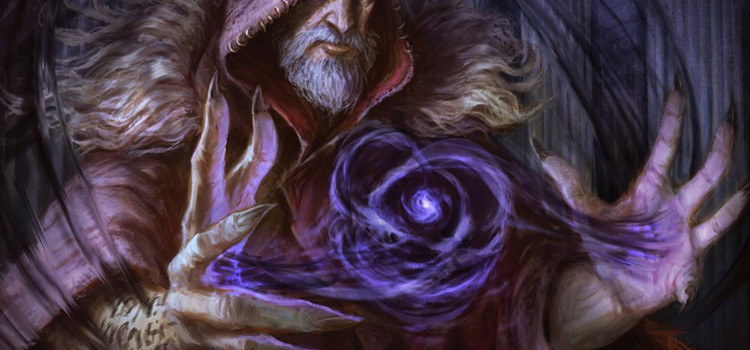
So you want to block out the sun.
Whether you’re an aspiring evil mastermind or seek to bend the powers of shadow to your more benevolent whims, darkness is a fun element to play with in 5th edition.
Let’s take a look at one of the easiest ways to create magical darkness in D&D.
Darkness Spell
School: Evocation
Level: 2nd
Casting Time: One Action
Range: 60 feet
Components: Verbal, Material (bat fur and a drop of pitch or piece of coal)
Duration: Ten Minutes (Concentration)
The darkness spell creates a bubble of pure shadow and darkness with a 15-foot radius. You can place that bubble on either a point you chose, an object you’re holding, or an object that isn’t being held or carried by another creature.
The darkness is magical, so even creatures with natural darkvision can’t see through it.
This darkness works pretty much like anti-light. In the same way you might cover a flashlight, you can completely cover the source of the spell with an object to ‘cut off’ the darkness temporarily.
The spell also dispels any spell of 2nd level or lower that creates an area of light.
Who Gets Darkness?
So this gets tricky.
The darkness spell is on the sorcerer, warlock, and wizard spell lists, so they can pick it up whenever they want. Circle of the Land druids can get the spell, but only if they chose the Swamp for their Circle Spells feature.
Way of Shadow monks can cast darkness using their ki points.
It’s a bonus spell for the Oathbreaker paladin, but not every DM lets their players choose that particular option.
Bards can always pick darkness as one of their Magical Secrets, but they usually have more high-powered spells in mind by the time they get that feature.
Drow and certain types of Tieflings also get to cast the darkness spell for free once per day at level 5.
Spellcasting elves with the Mark of Shadow from the Eberron setting get to add darkness to their spell list, no matter what their class is.
Where Things Get Tricky…
The darkness spell, and magical darkness in general, tends to confuse a lot of new players because of how it interacts with the Advantage and Disadvantage system in 5th edition D&D.
The short version is that if you’re in darkness, most people won’t be able to see you.
The downside is, you probably can’t see out.
The generally-agreed ruling is that creatures inside the bubble of darkness are heavily obscured, so attacks against them have disadvantage (roll twice and take the lower result).
If those creatures can’t see through magical darkness, they’re effectively blinded, which means attacks against them have advantage (roll twice and take the higher result). Since advantage and disadvantage cancel each other out, everybody rolls normally.
This is, however, up to each individual DM.
Some run darkness a little differently, so if you’re planning to use the spell, it’s always a good idea to ask your DM how they think it should work.
You should still be able to target creatures inside a field of darkness. Just because you can’t see them doesn’t mean you can’t hear them or know where they are. If they take the Hide action, however, you may lose track of them.
You can still pick a place to fire within the darkness. But there’s no guarantee that’s actually where the target is standing.
Why Use Darkness in 5e?
We’ll get to the combat tricks in a bit, but darkness can be useful in a lot of situations.
Need a quick escape? Darkness can work just like dropping a smoke bomb.
Want to make a distraction? There’s few things more concerning than a giant lightless bubble hovering a foot off the ground.
After all, there’s a reason lots of people are afraid of the dark. There’s no telling what might be inside there.
You can also use darkness to stop spells (of 2nd level or lower) that create areas of light. Faerie fire and flaming sphere both create areas of light as part of their effects.
If your sphere of darkness overlaps their area of light, the spell that made that light is dispelled.
At lower levels when you don’t have access to dispel magic, this can be a good way to get rid of similar nasty effects when fighting an enemy caster.
If somehow you end up fighting a band of evil druids who all cast flaming sphere, one shadow monk casting darkness and a quick run around the battlefield can turn off all those spells.
It can also be used defensively.
A sphere of darkness is a great place for allied rogues to Hide with their Cunning Action.
Opportunity attacks can only be made against a creature you can see, so anything blinded by a field of darkness is out of luck. Plus, anything that moves into the sphere of darkness is harder to spot and impossible to target with spells or effects that require something to see its target.
While you can target creatures you can’t see with weapon attacks through the Attack action, the same can’t always be said for all spells.
This depends a lot on your Dungeon Master and how picky they want to get about the spell descriptions. But a lot of damaging spells require you to target a creature you can see.
If you can’t see through the darkness, you can’t cast those spells.
There are plenty of other spells like fireball that target an area of effect, but it does limit your choices significantly.
Which brings us to our next point:
How To See In Magical Darkness
Few things in D&D are truly impossible, even if getting all the players to show up on-time for a session can feel like it.
Lots of creatures and player races have darkvision, but that doesn’t help with a spell like darkness.
Sorcerers
The Shadow Magic sorcerer origin allows a player to cast darkness using their 2 of their sorcery points, and to see through the magical darkness they create.
Using a bonus action, you can convert a 2nd level spell slot into 2 sorcery points using the Font of Magic feature, allowing you to not waste all your starting sorcery points on casting darkness.
Warlocks & Invocations
Warlocks can get a very useful ability called Devil’s Sight as one of their invocations, which allows them to see through both mundane and magical darkness.
A recent public playtest document from Wizards of the Coast lets players take a feat called Eldritch Adept, which lets other characters take one of the warlock invocations.
The feat is only accessible to characters with the Spellcasting or Pact Magic features, but it opens up a lot of options to those who do.
This feat lets Arcane Trickster rogues and Eldritch Knight fighters take Devil’s Sight and comfortably surround themselves in darkness before rushing their opponents. It’s a great way for Arcane Tricksters to get advantage for their sneak attack and protect themselves at the same time.
The feat is still in playtest, but hopefully we can expect to see it in a published form soon.
As it stands currently, non-warlocks need to multiclass into warlock to get the Devil’s Sight invocation. Although a number of warlock abilities are appealing enough to make some characters consider what entities they could bargain with for a little extra power.
Druids & Wild Shapes
Arcane magic isn’t the only way to see through the darkness spell, or even the easiest.
A number of beasts have blindsight, allowing them to perceive their surroundings without ‘sight’.
From bats to giant scorpions, this gives Circle of the Moon druids a number of options to choose from when partnering with a friend casting the darkness spell.
Imagine how disturbing it would be to see a scorpion the size of a horse charging you, only for everything to go suddenly go black?
At 10th level, a Circle of the Moon druid can turn into an earth elemental. This particular elemental has tremorsense, the ability to sense creatures from the vibrations they cause in the ground, giving it one more powerful form it can take to fight in darkness.
The beast options also work for casters using the polymorph spell, although by the time players can cast the spell, the ideal options are narrowed down to the giant shark, the hulking crab, and the huge giant crab from the White Plume Mountain adventure.
Wizards & Familiars
Bats are particularly important, as they can be summoned as wizards’ familiars.
Familiars summoned by the find familiar spell can deliver spells with a range of touch as if the caster had touched the target.
An enterprising wizard can direct their familiar to touch a creature inside the darkness spell, then cast shocking grasp or another touch spell.
On top of that, since area-of-effect spells don’t care about the blinded condition, there’s nothing to stop a caster from throwing a carefully-placed fireball at a creature within darkness.
Just be careful not to burn your ally.
Other spellcasters can make use of the same trick by taking the Magic Initiate or Ritual Caster feat to learn the find familiar spell.
You can do the same with a ring of spell storing, in the unlikely event you happen to have one of those lying around.
Everything Else
There’s a number of other ways to ignore the effects of magical darkness.
Items like a gem of seeing or the dagger of blindsight from Waterdeep: Dungeon of the Mad Mage let a character see through magical darkness, as would the legendary war pick Ironfang from Princes of the Apocalypse.
The gem and dagger are both rare items, however. And are normally too expensive for lower-leveled parties and may not even be obtainable in-game.
An artificer could replicate a gem of seeing… at 14th level, which is a little late for many parties.
Other items include Danoth’s Visor (legendary), Silken Sprite (artifact), or Belashyrra’s Beholder Crown (legendary).
All three come from the Exandria or Eberron settings, and are extremely valuable and equally rare. There’s no guarantee they could be found or even exist in a particular campaign.
You could try to become a half-dragon.
This is entirely up to your DM, but the Monster Manual does include a template to turn a creature into a half-draconic creature with blindsight out to 10 feet.
There is also an Epic Boon your DM can give you called the Boon of Truesight, but that’s only available to 20th level characters, and isn’t really a practical solution to the darkness problem.
On top of everything else, Wizards of the Coast released a playtest document for Class Feature Variants in 2019 that included a new fighting style for fighters, paladins, and rangers called ‘Blind-Fighting’.
This fighting style would allow characters to ignore any disadvantage caused by not being able to see a target.
The Class Feature Variants were extremely popular. And Wizards has confirmed that most of the content in that document will be published in Tasha’s Cauldron of Everything.
Combat Tricks & Darkness Uses
Darkness is one of those spells that rewards clever applications.
If you’re lucky, maybe your entire party can see in magical darkness.
Your druid can turn into a giant scorpion, your pact of the blade warlock has Devil’s Sight, and your wizard has a bat familiar.
Yet it’s much more likely that most of the other characters won’t be able to see through your magical darkness bubble.
If you’re planning to use darkness, one of the best ways to be kind to your party is to find ways to carefully place the spell.
Something to remember: you’re never going to be able to use darkness all the time. Devils have a Devil’s Sight ability of their own and can see in magical darkness.
Dragons have blindsight. Some elementals have tremorsense. Some spellcasters, fiends, and fey have truesight.
All of which will let them see you whether you cast darkness or not.
Which is a good thing.
It’s cool to have a fun trick up your sleeve, but if every fight is the same cycle of “darkness, rinse, repeat,” the game would get dull quick.
Use these tricks when you can, but be ready to work with your fellow players to meet new challenges together.
Large and Huge Creatures
Many creatures are big enough that you can cover their head with the sphere of darkness without covering their entire body.
Anything from a dire wolf to an aboleth is large enough that careful positioning can keep them from seeing your allies while still letting the rest of the party attack unhindered.
If you manage to cover only some of the creature’s body, it becomes blinded by the field of darkness while the party can attack its feet or other extremities with impunity.
The now-blinded creature gets disadvantage on all of its attacks, while the party would get advantage on all of theirs.
Combine this with spells that let you control a target’s movement like the lightning lure spell or similar features of the Open Hand monk or Battlemaster fighter, and the party can keep the creature safely blinded by the field of darkness.
The Sentinel feat also comes in handy here.
If the creature tries to move out of the darkness, a character in melee range can force it to stay put.
Even if the creature simply turns around to target someone outside the field of darkness, it’s still not a permanent solution.
Other PCs can take the Ready action, holding onto spells or melee attacks until the character with the darkness spell can get into position.
If the trigger for their Readied actions is the monster being blinded, they can wait for their attacks to go off once the monster is vulnerable again.
This can be a little tricky, and risks losing a chance to strike if the monster makes a run for it, or losing the spell if you lose concentration on a readied spell.
Gargantuan And (Some) Huge Creatures
What if the monster is taller than the 15 foot radius of darkness?
A hill giant is only around 16 feet tall according to the Monster Manual (pg. 153), and it shouldn’t be hard to raise the object a foot or two to make sure the giant’s head is inside the darkness.
The storm giant, however, clocks in at a massive 26 feet tall, making such shenanigans a bit more difficult.
Fortunately, page 271 of the Dungeon Master’s Guide details rules for climbing onto bigger creatures, because who doesn’t want to climb a giant?
Any industrious adventurer who can manage to teleport onto or climb up to a giant’s head can effectively blind them with an area of darkness, while leaving their feet visible to the rest of the party.
This applies to pretty much any truly massive creature, including the giant bird-like rocs and massive dinosaurs like the brontosaurus.
There’s some weirdness here for Huge-sized creatures that aren’t quite tall enough (elephants, for example). Between keeping the creature’s head inside the darkness or climbing the truly big ones like a tree, you should be able to get plenty of play out of this particular strategy.
Don’t use it on dragons—their blindsight means they’ll make short work of anyone trying this trick.
Flying Balls of Shadow
Flying is fun.
Flying while emitting a 15-foot-radius sphere of darkness is even better.
Creatures with a flying speed, such as aarakocra or winged tieflings, have an even easier time keeping large creatures’ upper bodies inside of a field of darkness, and can easily move to keep them within the bubble.
Even normally land-bound creatures can achieve a similar effect with a broom of flying, winged boots, or some other method.
This trick is a little more dangerous, if only because a well-aimed hit might send a potential darkness user plummeting to the ground.
Darkness Bomb
You can cover up your darkness spell when you cast it on an object.
The spell doesn’t say anything about what you do with the object once you cast it, so you can always give it to someone else.
Alternatively, put the object with darkness on it into a small, breakable, container.
Maybe a small wooden box.
This can work like a trap, where the sphere of darkness “explodes” out of the box when opened.
Or, you could use it as a grenade. If the box shatters after you throw it, anyone near where the box landed is now swallowed by darkness.
This can be very helpful for Shadow Magic sorcerers and Way of Shadow monks.
Both get an ability to teleport through dim light and darkness, and giving them a “landing pad” of shadow can let them teleport behind enemy lines or into rooms that were previously filled with light.
Darkness 5e Builds
So you’ve decided you want to make the darkness spell a core element of your character.
Awesome.
Let’s take a look at a few builds, just to inspire some ideas.
Nature’s Darkness
Moon druids have access to a number of forms with blindsight or tremorsense.
Wild Shape doesn’t stop you from concentrating on spells you’ve already cast, so if you have darkness, there’s nothing to stop you from casting the spell, using Wild Shape, and then terrifying your enemies.
From level 2 to 4, your best bet is going to be the giant spider or ice spider (since most DMs may not let you pick the two-headed Spider King).
A few more options kick in at level 6, including a giant constrictor snake and a hunter shark, many of which double as underwater forms.
Level 9 nets you the giant scorpion, level 10 earns you the earth elemental, and higher levels give you access to creatures like the giant coral snake and the hulking crab.
Pros: Moon druids are extremely flexible, and you can switch between tanking as a beast or casting relatively quickly. Even when darkness isn’t your best bet, you’ll have plenty of options in and out of combat.
Cons: You need to be a tiefling, drow, or a mark of shadow elf from Eberron to play a moon druid with darkness. You can pick a different race, but you’ll need to have a friend to cast darkness for you. Or you could multiclass, but the classes with the spell (sorcerer, warlock, and wizard) don’t have the best synergy with druids.
In a way, this can also be a pro.
If your party includes a warlock planning to take Devil’s Sight or a Shadow Sorcerer, the two of you can work together, freeing you to choose a different race for your character.
It also gives you a chance to create a shared backstory element.
Is there a deeper meaning to the two of you (or more) working together?
Do you serve a deity or fiend associated with night and darkness?
Are you both assassins who find the night is a prime opportunity to strike?
Or perhaps you’re both old friends who prefer combat techniques and spells that allow you to work well together.
Elf Shadowblade
This build relies on a few specific choices, but when put together it creates a powerfully adept melee fighter. Drow are a good choice here because of their free casting of darkness.
Eladrin have a charisma boost as well, which is good since we’re going warlock.
However, any kind of elf works for this build so long as you have a relatively high ability score to put into Charisma.
Take the Hexblade warlock patron (to make weapon attacks with Charisma) and the Devil’s Sight Invocation, along with the Pact of the Blade.
Pick up a greatsword or some other hefty weapon that you can now use thanks to Pact of the Blade.
At 4th level (if you can afford it) take the Elven Accuracy feat and boost your Charisma.
Congratulations, you can cast darkness, see in magical darkness, attack with Charisma using a weapon with a large damage die, and whenever you attack with advantage because of darkness, you get to roll 3 times and take the highest result.
Pros: You’re playing a warlock. Done right, you get to play a competent melee fighter who hits hard and still has access to high-level spells. You also get a ton of invocations to make you an excellent magical multi-tool for the party.
Elven Accuracy works whenever you have advantage, so even if you can’t use darkness, you can still get the benefit. If you get find familiar through a feat, you can have it give you advantage with the Help action.
If you’re a drow, you get a free casting of faerie fire. Other players can help by hitting enemies with the stunned, blinded, or restrained conditions, giving you additional openings.
Cons: Blade pact warlocks take a bit of investment. You’ll want at least the Thirsting Blade and Lifedrinker invocations when you can get them, and you may want Eldritch Smite or Improved Pact Weapon as well.
Shadow Monk
The original darkness expert.
There are a dozen different ways to play a fun monk, but something to remember is that your darkvision spell lasts 8 hours.
If you don’t have darkvision naturally, you may want to cast the darkvision spell at the beginning of the day so you can get those ki points back on your first short rest.
Pros: Many of their spells (darkness, silence, pass without trace) are very useful in and out of combat. Nothing compares to tossing a silence spell into an area where you have a spellcaster boss monster cornered.
Their teleportation and invisibility features add even more icing to the cake.
Cons: If you can, you’re going to want to find a way to see in the darkness you make.
Your teleportation ability requires that you can see the area of darkness you teleport to, so if you’re blinded by your own
Sadly, Way of Shadow monks can’t see through their own darkness like a shadow sorcerer, so we have to get creative.
You could multiclass warlock, but the warlock’s dependency on Charisma makes it less than ideal. If you want to go this route, you need at least 13 Charisma and you’ll have to get to 2nd level as a warlock.
It still might be worth it.
But remember your progression in your monk class will be slowed down by those 2 levels in warlock.
If your DM lets you use Unearthed Arcana playtest content, you could take the Fighting Initiate feat from the 2020 Feats document.
That would let you take the Blind-Fighting style from the Class Feature Variants (and hopefully Tasha’s Cauldron of Everything).
While it wouldn’t let you see in magical darkness, it would let you get advantage against creatures while you fight them in your darkness spell.
If that feat is available to you, you can play as a variant human.
You’ll get a feat at 1st level that you can use for Fighting Initiate. Otherwise, you could take 1 level of Fighter (you should have much more than the 13 Dexterity you’d need).
That should let you take the Blind-Fighting style, and give you Second Wind as a bonus short-rest recharge healing ability.
The Dark Knight
No, not that one.
Eldritch knights have access to the wizard’s spell list, including the darkness spell.
If your DM allows playtest content, or the Blind-Fighting style is published in Tasha’s, then you have a character who can function exceptionally well in darkness.
As always, you also could multiclass into warlock.
Alternatively, Eldritch Knights can also get access to the shadow blade spell at higher levels.
If you happen to be fighting alongside someone else with the darkness spell (like a friendly warlock), you can concentrate on shadow blade instead, while your buddy keeps up darkness.
Shadow blade grants advantage on attacks you make against targets that are in dim light or darkness, and deals 2d8 psychic damage on a hit.
If you play an elf for the Elven Accuracy feat, you’re in an even better position to take advantage of the shadows since shadow blade creates a finesse weapon that works for the Elven Accuracy feat.
